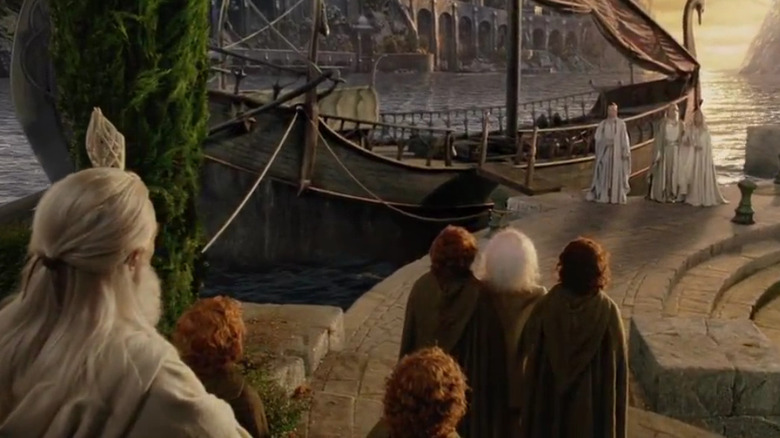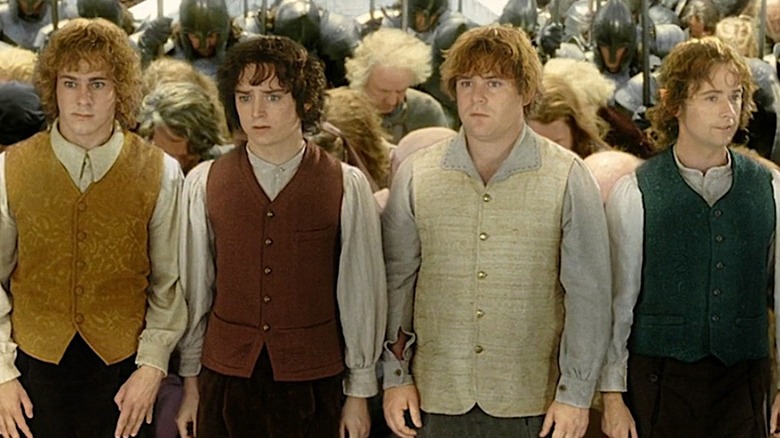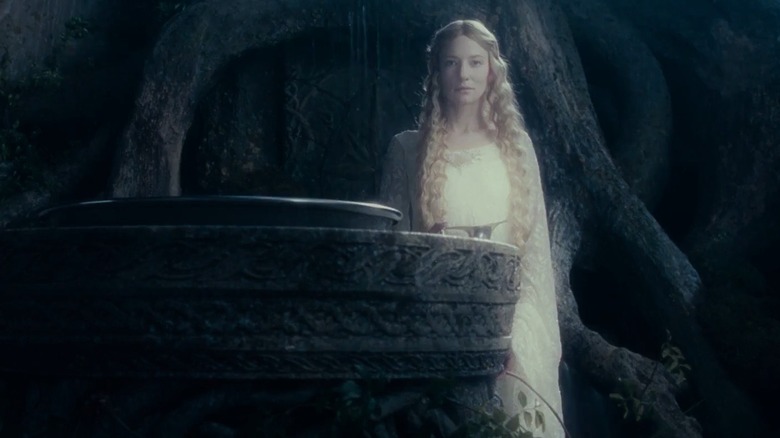Static Media
Adaptations of beloved source material often stir up controversy, and nowhere is this more apparent than in Middle-earth narratives. Prime Video’s TV series “The Rings of Power” has made some surprising, though arguably necessary, alterations to Tolkien’s canon. The recent card expansion of Magic the Gathering has also reinterpreted many “Lord of the Rings” characters. Even “The War of the Rohirrim” anime is creating a buzz about Helm’s daughter Héra, a character who is barely mentioned in the books.
As more and more adaptations of Tolkien’s universe emerge, it’s worth noting that Peter Jackson’s trilogy had its own share of imperfections. Despite these, Jackson’s “The Lord of the Rings” films are hailed as the gold standard of fantasy adaptations, capturing the spirit and essence of the books. However, there were several notable deviations from the source material, such as Arwen rescuing Frodo, the presence of Elves at Helm’s Deep, and the appearance of ghostly green ghouls on the Pelennor fields. And let’s not even start on Aragorn’s beard…
Perhaps one of the most significant changes is what the films chose to omit, particularly towards the end of “The Return of the King.”
Peter Jackson’s Take on the Ending of Return of the King

Warner Bros
To be fair, the actual ending of Jackson’s trilogy aligns closely with the book. Frodo sails away into the West, and Sam returns home, embracing his young Hobbit family, uttering the words, “Well, I’m back.” It’s a touching and faithful conclusion.
However, this literal last line, which marks the end of both the film and book, obscures a significant deviation in “The Return of the King.” This tale has numerous endings. The film gives the impression of nearing its conclusion multiple times, only to continue. This isn’t necessarily a bad thing — multiple endings are intrinsic to “The Return of the King.” Let’s explore these various endings, based on the more detailed extended edition.
After the One Ring is destroyed, we witness Sauron’s downfall and the Men of the West’s victory. An extended sequence in Gondor follows where Aragorn is crowned king, Arwen is made queen, and the Hobbits bow to no one. We then follow the Hobbits back to the Shire, where they resume their regular lives, and Sam finally marries Rosie Cotton. Frodo completes the Red Book of Westmarch, hands it to Sam to finish, and sails away into the West with Bilbo, Gandalf, and others. Sam returns home to a peaceful world, marking the end of the film’s narrative.
J.R.R. Tolkien’s Version of the Return of the King Ending

Warner Bros
The book version of “The Return of the King” shares many similar plot points, but with one major difference. Before diving into the details, it’s worth noting that the book arguably “ends” in at least six chapters. Therefore, the extended movie ending is justified. In these concluding chapters, we start with the destruction of the One Ring followed by an extensive celebration near the Black Gate. The party eventually moves back to Gondor, where half of a chapter is dedicated to Faramir and Éowyn’s love story (Jackson cannot be faulted for this omission, as there’s a brief added scene in the extended edition where they share a moment).
Next, Aragorn is crowned, Arwen becomes queen, and a large group heads north for another chapter as we bid farewell to one major character after another. However, upon reaching Bree, the four Hobbit heroes encounter trouble. They find that Saruman (who doesn’t die falling off Orthanc like in the extended edition of the movie) has overrun the Shire with his minions, referred to as “ruffians.” The chapter “The Scouring of the Shire” details the ensuing events as Merry and Pippin rally a Hobbit army to defeat the invaders. Sam lends a hand where he can, while a spiritually drained Frodo plays peacemaker, striving to prevent bloodshed.
In the end, the Ruffians are either killed or driven off, and the Hobbits confront Saruman at Bag End’s doorstep. The remorseless Wizard is unexpectedly killed by an angry and insulted Wormtongue, who stabs him in the back before being killed by Hobbit arrows. The Hobbits then begin the long process of cleaning and restoring their homeland, a task that takes months to start. They eventually reap the fruits of their labor, and the following year is considered especially blessed and fruitful. Frodo then sails off into the West, and Sam returns home, declaring that he’s back — and that’s the end.
The Impact of Peter Jackson’s Adaptation of Return of the King on Lord of the Rings

Warner Bros
Both the book and movie have lengthy, progressive endings, and for the most part, they match up pretty well. However, the glaring exception is the Scouring of the Shire. The wanton destruction of the Hobbit homeland is a critical part of the story. In the book, Gandalf specifically tells the Hobbits that “You must settle [The Shire’s] affairs yourselves; that is what you have been trained for.” Tolkien himself added in the foreword to “The Fellowship of the Ring” book that the Scouring of the Shire is “an essential part of the plot, foreseen from the outset, though in the event modified by the character of Saruman as developed in the story…”
In other words, the need for the Hobbits to reclaim their homeland on their own is a key part of the story’s conclusion, and removing it sends quiet yet critical shockwaves through the story that precedes it. For instance, we get a glimpse of the oppression in the Shire in the Mirror of Galadriel in the movie, but Jackson had to pivot. He spins the horrifying glimpse as something that “could be” if Frodo fails. In the books, Sam sees that vision presented as something that could very well be real, and he needs to choose between Frodo and the quest or protecting his home. In the event, he wisely chooses to save all of Middle-earth by continuing the quest, but they ultimately do have to deal with the consequences of leaving the Shire. Elrond also touches on the safety of the Shire even earlier in “The Fellowship of the Ring” when he argues that Pippin and Merry shouldn’t come on the quest, adding that the Shire is not free from peril and he hoped to send them back to warn the Hobbits of impending danger. They don’t go, and ultimately have to fight a small war as a result.
The removal of the Scouring of the Shire didn’t completely derail the movie. However, it did take away a significant and poignant point in the story designed to demonstrate the maturity, capability, and confidence that the Hobbits develop throughout their adventures. Also, who wouldn’t want to see a Hobbit army attacking a group of Human ruffians? Sounds like a hoot.
Credit: www.slashfilm.com


